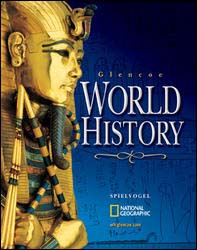Glencoe World HistoryChapter 13:
The Age of Exploration, 1500-1800Chapter OverviewsThe explorations of the fifteenth century led to expanded European power and a sharp increase in trade. Colonization, a dramatic growth in the slave trade, and the spread of Christianity were among the consequences of European expansion. Section 1 Exploration and Expansion
In the fifteenth century, Europeans set out on a series of overseas voyages that would lead to the establishment of European trading posts and colonies in both the Americas and the East. Religious zeal, a quest for personal and national glory, and a desire for new wealth were the chief motives behind the European voyages. New technologies and the growing power of the European monarchies made the voyages possible. The Spanish colonization of the Americas was extremely rapid and devastated native American civilizations. Colonization of the globe led Portugal, Spain, the Dutch Republic, England, and France to new economic heights. International trade increased, and a new economic theory—mercantilism—was born. Section 2 Africa in an Age of Transition
Slavery, which had been practiced in Africa since ancient times, saw a dramatic rise in the sixteenth century. Many of the slaves were sent to Brazil and the Caribbean to work on sugarcane plantations. The route became known as the Middle Passage. As many as ten million Africans traveled on the Middle Passage, many of them dying en route or falling prey to disease in the Americas. As the demand for slaves grew, slave traders in Africa moved further inland to find their victims. In addition to the tragic effects on individual victims, the slave trade brutalized and devastated some African states, such as Benin. European influence also caused some regional power shifts within Africa. In general, though, traditional African political systems continued to exist. Christian missionaries from Europe made some inroads in Africa, but they did not slow the spread of Islam. Section 3 Southeast Asia in the Era of the Spice Trade
In 1500, mainland Southeast Asia was a relatively stable region. Occasional conflicts occurred between emerging kingdoms. On the Malay Peninsula, the influence of Muslim traders led to the rise of the sultanate at Melaka. The rapid growth of the spice trade led Portugal to occupy the Moluccas, also known as the Spice Islands. The Dutch then pushed out the Portuguese and extended their control over the entire area. The Europeans had less impact on mainland Southeast Asia, which was not a major source of spices. The more unified mainland states were able to drive out most of the traders and missionaries. However, throughout Southeast Asia, foreign models of government were adapted to local circumstances. In the non-mainland states and the Philippines, Islam and Christianity attracted converts, while Buddhism was advancing on the mainland.  | 

















